Azetidine-1,2-dicarboxylic acid 1-tert-butyl ester
- CAS NO.:159749-28-7
- Empirical Formula: C9H15NO4
- Molecular Weight: 201.22
- MDL number: MFCD01861756
- SAFETY DATA SHEET (SDS)
- Update Date: 2024-07-09 21:58:15
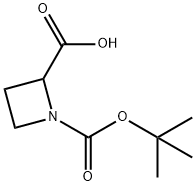
What is Azetidine-1,2-dicarboxylic acid 1-tert-butyl ester?
Description
Azetidine-1,2-dicarboxylic acid 1-tert-butyl ester (ADCBT) is a pyrrolidinyl nicotinic acetylcholine receptor agonist. ADCBT has been shown to have affinity values for neuronal nicotinic acetylcholine receptors that are significantly higher than those of nicotine. It has been shown to be regioselective in the sense that it binds preferentially to the alpha4beta2 subtype of the nicotinic acetylcholine receptor, which is present in both peripheral and central neurons. It also has a high affinity for the acetylcholine binding site at the neuromuscular junction. ADCBT has been shown to have analgesic effects in animal studies.
Chemical properties
White powder
The Uses of Azetidine-1,2-dicarboxylic acid 1-tert-butyl ester
1,2-Azetidinedicarboxylic Acid 1-(1,1-Dimethylethyl) Ester, is an useful intermediate in the synthesis of pharmaceutical compounds including inhibitors and receptor Antagonists. It can be used in the synthesis of polypeptides.
Preparation
Sodium hydroxide (2.08 g, 51.92 mmol) was added to a solution of azetidine-2-carboxylic acid (5.00 g, 49.50 mmol), di-tert-butyl dicarbonate (13.50 g, 61.80 mmol) in ethanol (120.0 mL) at 0 °C. After stirring the reaction mixture for 8 hours, the pH of the mixture was adjusted to 2 with 1.0 N HCl and extracted with ethyl acetate (2 × 200 mL). The combined organic layers were washed with brine, separated, and dried over anhydrous sodium sulfate. Then the compound was concentrated under reduced pressure to afford Azetidine-1,2-dicarboxylic acid 1-tert-butyl ester.
Properties of Azetidine-1,2-dicarboxylic acid 1-tert-butyl ester
| Boiling point: | 321.0±35.0 °C(Predicted) |
| Density | 1.246±0.06 g/cm3(Predicted) |
| storage temp. | 2-8°C |
| pka | 4.01±0.20(Predicted) |
| color | Pale yellow |
Safety information for Azetidine-1,2-dicarboxylic acid 1-tert-butyl ester
| Signal word | Warning |
| Pictogram(s) |
 Exclamation Mark Irritant GHS07 |
| GHS Hazard Statements |
H302:Acute toxicity,oral H315:Skin corrosion/irritation H319:Serious eye damage/eye irritation H335:Specific target organ toxicity, single exposure;Respiratory tract irritation |
| Precautionary Statement Codes |
P261:Avoid breathing dust/fume/gas/mist/vapours/spray. P305+P351+P338:IF IN EYES: Rinse cautiously with water for several minutes. Remove contact lenses, if present and easy to do. Continuerinsing. |
Computed Descriptors for Azetidine-1,2-dicarboxylic acid 1-tert-butyl ester
New Products
4-AMINO-TETRAHYDRO-PYRAN-4-CARBOXYLIC ACID HCL 4-(Dimethylamino)tetrahydro-2H-pyran-4-carbonitrile 4-Aminotetrahydropyran-4-carbonitrile Hydrochloride (R)-3-Aminobutanenitrile Hydrochloride 3-((Dimethylamino)methyl)-5-methylhexan-2-one oxalate 1,4-Dioxa-8-azaspiro[4.5]decane 5-Bromo-2-nitropyridine Nimesulide BP Aceclofenac IP/BP/EP Diclofenac Sodium IP/BP/EP/USP Mefenamic Acid IP/BP/EP/USP Ornidazole IP Diclofenac Potassium THOMAIND PAPER PH 2.0 TO 4.5 1 BOX BUFFER CAPSULE PH 9.2 - 10 CAP SODIUM CHLORIDE 0.1N CVS ALLOXAN MONOHYDRATE 98% PLATINUM 0.5% ON 3 MM ALUMINA PELLETS (TYPE 73) LITHIUM AAS SOLUTION 2-Bromo-1-(bromomethyl)-3-chloro-5-nitrobenzene 2-Bromo-3-nitroaniline N-(3-Hydroxypropyl)-N-methylacetamide 3-Bromo-6-chloropyridazine 4-ethyl-3-nitrobenzoic acidRelated products of tetrahydrofuran
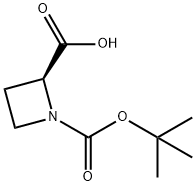
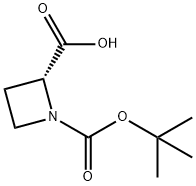


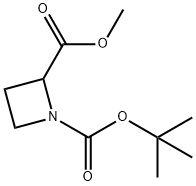
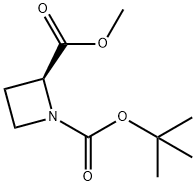


You may like
-
 Azetidine-1,2-dicarboxylic acid 1-tert-butyl ester 98% CAS 159749-28-7View Details
Azetidine-1,2-dicarboxylic acid 1-tert-butyl ester 98% CAS 159749-28-7View Details
159749-28-7 -
 1-Methyl-6-oxo-1,6-dihydropyridazine-3-carbonitrile 98%View Details
1-Methyl-6-oxo-1,6-dihydropyridazine-3-carbonitrile 98%View Details
99903-60-3 -
 1823368-42-8 98%View Details
1823368-42-8 98%View Details
1823368-42-8 -
 2-(3-(tert-butyl)phenoxy)-2-methylpropanoic acid 1307449-08-6 98%View Details
2-(3-(tert-butyl)phenoxy)-2-methylpropanoic acid 1307449-08-6 98%View Details
1307449-08-6 -
 Ethyl 3-(furan-2-yl)-3-hydroxypropanoate 25408-95-1 98%View Details
Ethyl 3-(furan-2-yl)-3-hydroxypropanoate 25408-95-1 98%View Details
25408-95-1 -
 2-Chloro-5-fluoro-1-methoxy-3-methylbenzene 98%View Details
2-Chloro-5-fluoro-1-methoxy-3-methylbenzene 98%View Details
1805639-70-6 -
 1784294-80-9 98%View Details
1784294-80-9 98%View Details
1784294-80-9 -
 Lithium ClavulanateView Details
Lithium ClavulanateView Details
61177-44-4